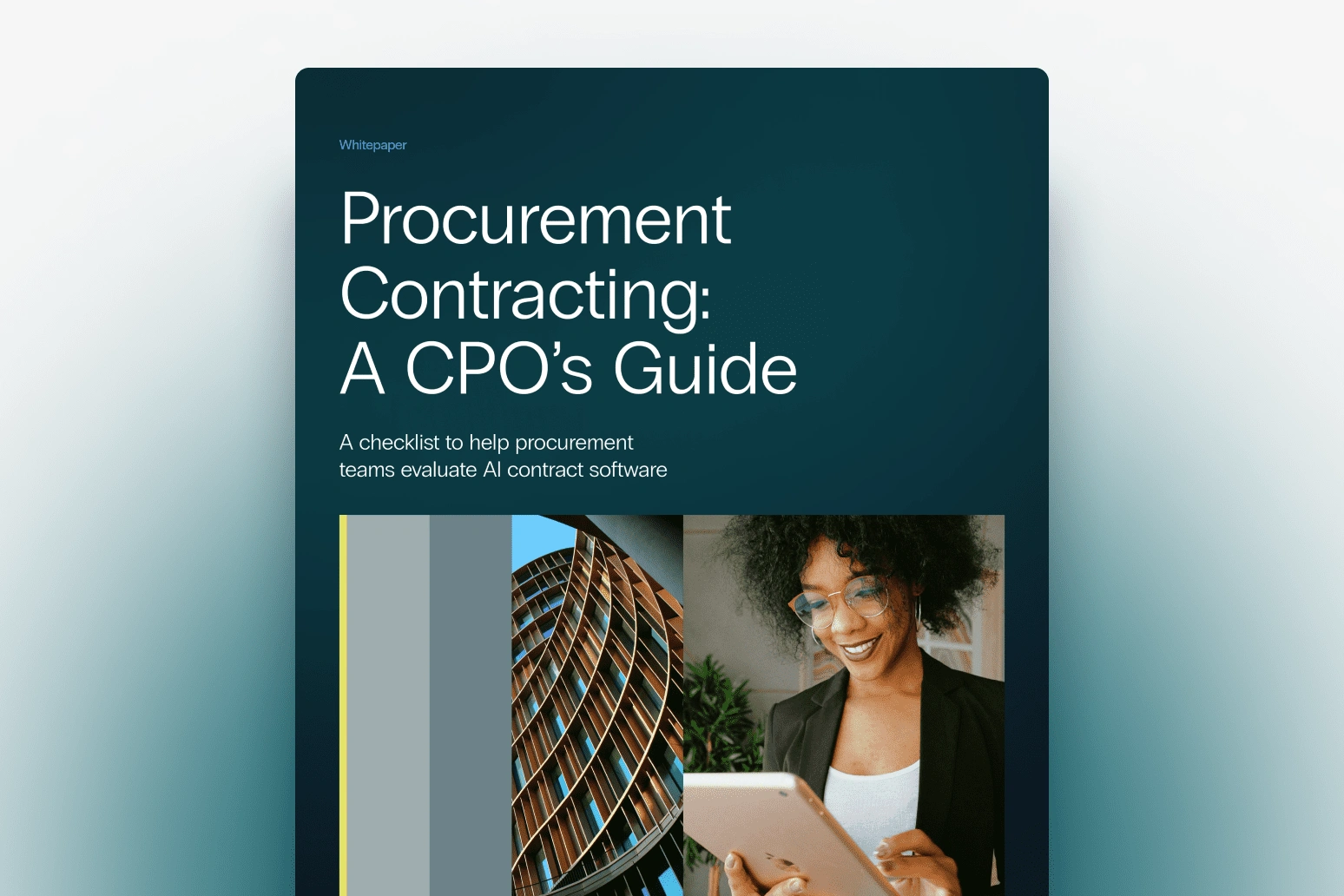
- Last Updated: Oct 28, 2025
- 15 min read
- Arpita Chakravorty
Imagine your company is preparing to purchase critical supplies or services. You’ve identified vendors, negotiated prices, and signed contracts. Yet, months later, unexpected costs pop up, deadlines get missed, or quality falls short. How could this happen? Often, the answer lies not in the signing but in managing those contracts—this is where procurement contract management comes in.
Procurement contract management is more than just storing signed agreements. It is the structured, strategic process that governs contracts throughout their entire lifecycle, ensuring that your company achieves value, reduces risks, and maintains smooth supplier relationships no matter what industry you operate in.
Whether you’re in manufacturing, healthcare, IT, government, or retail, procurement contract management plays a crucial role in controlling costs, enhancing compliance, and delivering reliable supply chains. Let’s explore what procurement contract management really means, how it works, and why understanding it can transform your procurement practices.
Understanding the Basics: What Does Procurement Contract Management Cover?
Procurement contract management bridges two key areas: procurement, which is the process of sourcing and purchasing goods or services, and contract management, which governs the agreements underlying those acquisitions. Combined, procurement contract management focuses on overseeing contracts from creation to completion, aligned with procurement objectives.
Core Concepts to Know
- Procurement: The step-by-step process of identifying needs, sourcing suppliers, negotiating terms, and securing goods or services.
- Contract Lifecycle Management (CLM): The broader discipline of managing contracts — from drafting to negotiation, execution, performance monitoring, and renewal or closure.
- Procurement Contract Management: The subset of CLM that specifically supports procurement activities, ensuring contracts deliver value and mitigate risk across sourcing and supplier relationships.
- Service Level Agreements (SLAs) and Key Performance Indicators (KPIs): Metrics embedded within contracts to measure supplier performance and compliance.
- Governance: Defined roles, responsibilities, and processes that enforce contract compliance and strategic alignment.
These concepts form the foundational terminology that sets procurement contract management apart from merely signing contracts.
For practical illustration of how these concepts play out in real buying scenarios, explore our Procurement Contracts Examples to see typical use cases and structures in action.
Breaking Down the Procurement Contract Lifecycle: A Universal Framework
Effective procurement contract management requires a clear framework that describes the stages contracts move through and the activities involved. While industries use varied terminology, the lifecycle generally includes two broad phases: pre-signature and post-signature.
Pre-Signature Phase: Laying the Groundwork
- Needs Identification: Procurement teams define what goods or services are required and establish objectives.
- Supplier Sourcing and Evaluation: Potential vendors are identified, and their suitability assessed.
- Request for Proposal/Quotation (RFP/RFQ) Preparation: Standardized documents are created to solicit bids and proposals.
- Contract Drafting and Negotiation: Contracts are authored using templates and clauses that align with company policies, then negotiated to finalize terms.
- Approvals and Execution: Contracts undergo reviews, compliance checks, and formal signing.
Post-Signature Phase: Ensuring Contract Performance
- Contract Repository and Accessibility: Contracts are stored centrally for easy retrieval and audit.
- Performance Monitoring and SLA Management: Supplier deliverables, milestones, and KPIs are tracked against agreed standards.
- Change Management: Amendments, extensions, or renegotiations are handled systematically.
- Compliance and Risk Management: Ongoing verification that contractual obligations and regulatory requirements are met.
- Renewal or Closure: Contracts are proactively reviewed for renewal decisions or formally closed when complete.
Across every phase, clear documentation, active communication, and governance practices are essential to maintain momentum and value.
Understanding and actively managing these stages helps prevent common pitfalls like missed deadlines, cost overruns, or compliance failures.
Key Roles and Governance in Procurement Contract Management: Who Does What?
Procurement contract management is a shared responsibility often involving several teams working together to ensure contracts deliver on expectations.
Typical Stakeholders
- Procurement Officers: Lead sourcing activities, supplier selection, and initial contract development.
- Legal Teams: Review contract terms to mitigate legal risk and ensure compliance.
- Contract Managers or Specialists: Oversee day-to-day contract administration, performance tracking, and issue resolution.
- Finance Teams: Monitor financial compliance, payments, and budgeting impact.
- Business Units/End Users: Specify requirements and evaluate supplier performance.
- Suppliers/Vendors: Deliver goods or services as per contract terms.
Governance Structures
Successful procurement contract management programs rely on well-defined governance frameworks, often articulated with:
- Roles and Responsibilities Matrix (RACI): Clarifies who is Responsible, Accountable, Consulted, and Informed for each contract activity.
- Policies and Procedures: Standardize contract creation, approval, and performance processes.
- Risk and Compliance Committees: Provide oversight, especially for regulated industries.
- Audit Trails and Reporting: Enable transparency and accountability.
Effective governance not only manages risk but also aligns contract management activities with broader procurement strategy — enhancing supplier relationships and value delivery.
Inside Procurement Contract Management: Common Challenges and How to Address Them
Organizations across sectors often face similar obstacles in procurement contract management that hamper value realization.
Challenges Frequently Encountered
- Fragmented Contract Data: Scattered contracts make it difficult to monitor performance or compliance reliably.
- Lack of Standardized Processes and Templates: Inconsistencies slow contract drafting and increase errors.
- Limited Visibility into Supplier Performance: Without SLA tracking, issues may go unnoticed until costly problems emerge.
- Manual, Error-Prone Monitoring: Reliance on spreadsheets or outdated tools leads to delays and oversight.
- Poor Collaboration Across Teams: Gaps between legal, procurement, and business units reduce contract effectiveness.
- Inefficient Change Management: Uncontrolled amendments cause disputes or compliance risk.
How to Build a Strong Foundation
- Centralize Contract Storage: Use a digital, searchable repository to organize all procurement contracts.
- Adopt Standard Templates and Clauses: Develop industry-agnostic documents that can adapt for specific use cases yet maintain consistency.
- Define Clear Roles and Processes: Implement RACI matrices and governance protocols.
- Measure with KPIs: Track cycle times, supplier adherence, cost savings, and risk exposure through key metrics.
- Invest in Training and Collaboration Tools: Promote cross-functional understanding and communication.
- Leverage Technology: Move toward automation-ready platforms that enable real-time analytics and performance dashboards.
These steps help organizations transform contract management from a reactive task into a strategic procurement asset.
For help selecting the right tools to support these improvements, see our guide on Types of Procurement Software to understand which platforms align best with your process needs.
Seeing Procurement Contract Management in Action: Cross-Industry Examples
To illustrate, consider how procurement contract management plays out in diverse sectors with universal value drivers.
Manufacturing
A global manufacturer manages thousands of supplier contracts covering raw materials and components. By standardizing templates and integrating contract data into ERP systems, they reduce cycle times by 25% and identify opportunities to consolidate suppliers, leading to yearly cost savings of several million dollars.
Healthcare
A hospital chain needs strict compliance with regulatory standards while managing numerous vendor agreements for medical devices and services. Employing SLA-based performance tracking ensures timely deliveries and reduces patient care disruptions, while governance frameworks mitigate legal risks.
IT Services
An IT services provider faces complex software licensing and service-level agreements. Implementing procurement contract management allows them to automate renewals and monitor usage against contractual caps, avoiding costly overages and supporting proactive contract negotiations.
Each example highlights how procurement contract management, grounded in universal principles, drives measurable business benefits.
Metrics That Matter: How to Measure Procurement Contract Management Success
Understanding which metrics to track helps prove procurement contract management’s value and guide continuous improvement.
Common KPIs and SLAs
- Contract Cycle Time: Measures the duration from contract initiation to execution; lower times indicate process efficiency.
- Supplier Performance Scores: Incorporate factors like on-time delivery, quality adherence, and compliance.
- Contract Compliance Rates: Percentage of contracts meeting all terms and conditions.
- Cost Savings Realized: Tracks financial benefits from negotiated terms and value extraction.
- Change Request Volume and Resolution Time: Indicates process stability and responsiveness.
- Renewal Rate and Contract Leakage: Monitors contract retention and unmonitored spend.
By consistently tracking such indicators, procurement teams can demonstrate ROI and operational performance.
While metrics reveal how well procurement contract management performs, technology determines how efficiently those results are achieved. This is where Sirion helps organizations move from manual monitoring to intelligent, connected contract management.
How Sirion Transforms Procurement Contract Management
Procurement teams often struggle with scattered data, disjointed workflows, and limited visibility across the supplier lifecycle. Sirion eliminates these gaps by giving organizations a unified, AI-driven platform that connects every stage of procurement contract management — from sourcing to renewal.
For procurement teams looking to scale efficiency and insight, explore AI-Native CLM for Procurement to automate negotiations, track obligations, and improve supplier performance with data-driven precision.
- AI-powered extraction and analytics help identify risks, deviations, and savings opportunities hidden within supplier contracts.
- Automated obligation tracking ensures suppliers meet SLAs, delivery timelines, and compliance requirements without manual follow-up.
- Integrated workflows streamline collaboration between internal stakeholders and external vendors.
- Centralized visibility across contract data and performance metrics reduces cycle time and prevents costly oversights.
Conclusion: From Compliance to Competitive Advantage
Procurement contract management is no longer a back-office function — it’s a critical driver of cost efficiency, risk mitigation, and supplier innovation. When done right, procurement contract management not only prevents missed obligations and hidden costs but also strengthens partnerships that deliver measurable business outcomes. With AI-powered tools like Sirion, organizations can move from reactive contract tracking to proactive performance management. The result is a procurement function that operates with transparency, agility, and confidence — turning every contract into a source of insight and every renewal into a strategic opportunity.Frequently Asked Questions About Procurement Contract Management
How does procurement contract management differ from general contract management?
Procurement contract management focuses specifically on contracts tied to sourcing and procurement activities, ensuring alignment with purchasing goals. General contract management may encompass a wider range of contracts including sales, partnerships, or employment.
What role does technology play in procurement contract management?
Technology streamlines contract storage, automates workflows, enforces compliance, and provides real-time analytics. Modern AI-powered CLM platforms enhance risk detection, performance monitoring, and reporting.
Are procurement contract templates industry-specific?
While some clauses need tailoring for regulated sectors like healthcare or government, many core contract templates (confidentiality, payment, delivery terms) are universally applicable and can be adapted.
How can organizations ensure supplier performance through procurement contract management?
By embedding clear SLAs and KPIs in contracts and setting up regular monitoring processes supported by data dashboards, organizations can systematically evaluate and improve supplier delivery.
What are the risks of poor procurement contract management?
Risks include cost overruns, supply chain disruptions, compliance violations, disputes, and missed opportunities for value.
Can small businesses benefit from formal procurement contract management practices?
Yes, even smaller organizations gain from standardized processes, role clarity, and performance tracking. It helps create predictability and supports growth.
How is procurement contract management linked to overall procurement strategy?
Procurement contract management operationalizes procurement strategy by ensuring negotiated terms are fulfilled, risks managed, and supplier relationships optimized, directly impacting cost, quality, and agility.
What is a simple way to measure the ROI of procurement contract management programs?
ROI can be estimated by comparing baseline contract cycle times and costs against improved figures post-implementation, factoring in savings from avoided risks, compliance fines, and better supplier performance.


